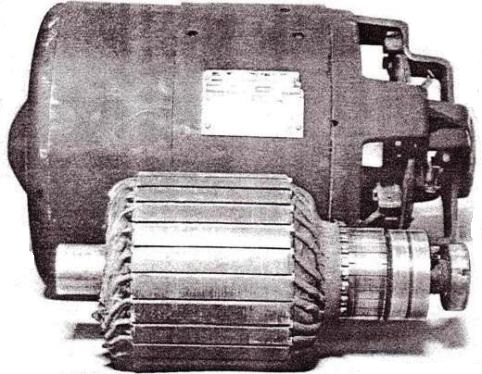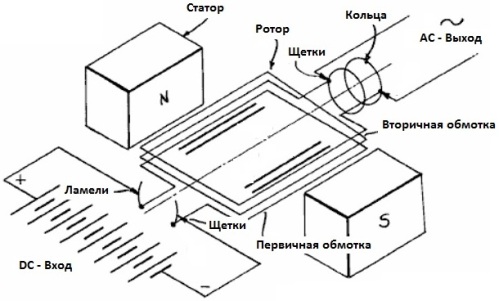Categories: Featured Articles » Interesting Facts
Number of views: 20128
Comments on the article: 3
Robert Alexander’s super-efficient motor generator
In October 1975, California inventor Robert Alexander introduced the public to an advanced drive for a car. According to the inventor, this electric drive was supposed to save car owners from the need to use combustible fuel, from excess noise, and from the need to constantly recharge the batteries.
The experts who arrived at the demonstration were very puzzled, because it seemed that the energy comes from "nothing." However, the car drove easily without fuel at a speed of 36 miles per hour. To experts' doubts, the inventor replied that the car was driving, and she did not care about their arguments. The initial power was provided by a converted electric motor of 7/8 horsepower.

The electric motor was redone so that 12 volts were obtained at its output, otherwise the output power would be too large. Robert's sons and his partner James Smith remade the car in 45 days to demonstrate the ability to drive without fuel and without pollution.
The press was invited to the demonstration, and later (when US3913004 was already received) one of the journalists was told the details of the project: the rotation of the electric motor starts from the battery, the hydraulic and air systems of the car come into action, while the battery manages to recharge from the generator. Alexander spent only $ 500 on this alteration.
Alexander and Smith themselves were not able to fully explain how this energy is derived from “nothing,” however, they noted that people have long been able to do much more than they know and understand, and go far for examples no need - just look at this car that drives. The inventors called the demonstrated phenomenon “Super Power”, since it uses as many as three types of power to achieve the goal.
The design is based on a transformer (converting device), which is also the rotor of the generator (intersected by magnetic flux). The AC output as a result is the product of two electromagnetic actions. Recall that the rate of change of acceleration - the third derivative of the coordinate - is a jerk.
The rotor is the core of the transformer, and has on itself a group of paired windings. Each rotor section has two windings, one of which works as a primary winding of a transformer and as a motor winding, and the second as a secondary winding of a transformer and as a generator winding. Moreover, only permanent magnets are located on the stator.
The generator uses well-known technologies for controlling and interacting with a magnetic field. Transformed and generated power are synchronously combined, which leads to an increase in output power.
The primary windings contain fewer turns than the secondary windings, in which, when crossing the magnetic lines, a large EMF is induced than that of the direct current source (which is the battery). The stator magnetic field crosses the rotor, and motivates it to move, while generating energy in the secondary windings.
The output of the alternating current in the secondary windings is essentially a synchronized function of the transformed energy from the primary windings, combined in the common grooves of the rotor with the secondary windings, and the generated energy. As a result, the current strength and voltage at the output increase accordingly.
In one of the installations made by the authors, which has four collector brushes and 20 slats, and contains 20 sectors on the rotor, the primary windings consisted of several turns of the conductor to be effectively carried out in rotation from 48 volts of direct current at 25 amperes, i.e. 1200 watts was necessary for rotation with a frequency of 1750 revolutions per minute.
At the same time, the secondary windings consisted of such a number of turns in order to effectively obtain 60 cycles per second (by transformation and generation) at a voltage of 110 volts and a current of 32 amperes, i.e., 3520 watts could be obtained at the output.
See also at bgv.electricianexp.com
:

